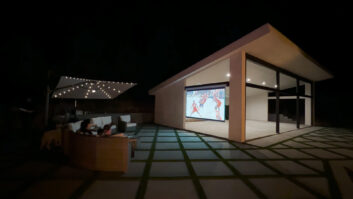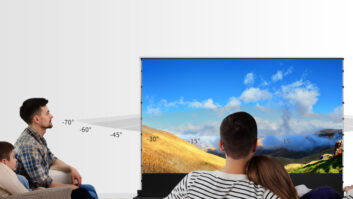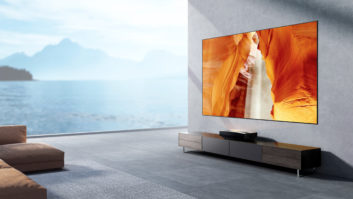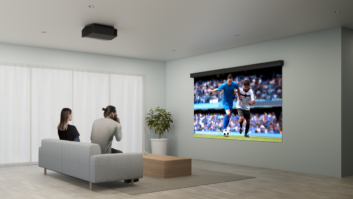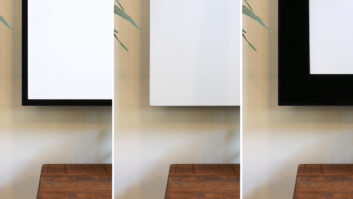Whenever choosing a projection screen, there are three questions you must ask — I refer to it as the law of PEG (Purpose, Environment, and Gear). Answering these questions will enable you to choose the right projector, in addition to the size, aspect ratio, screen material, and format of your projection screen.
Related: Projectors and Screens
PURPOSE
What are you using this for? It sounds like a dumb question but the customer’s answer will reveal the type of projector needed, as well as the corresponding aspect ratio and format of the screen itself.
- Type of Projector — By now, 1080p projectors are dirt-cheap and 4K projectors are getting there, so your demographics range from a CE retail shopper looking for more to the most affluent homes in town. For general “home-TV” purposes, consider an ultra-short throw projector since foot traffic will not be passing between the projector and screen. True videophiles and traditional home theater enthusiasts may prefer a standard “long-throw” projector on account of having superior picture performance in relation to cost. Standard throw projectors can also be used with the majority of specialty materials such as ambient light rejecting (ALR) projection screens.
- Aspect Ratio — Stay focused on 16:9 (HDTV) if the installation is for a media room/living room environment where the screen will be used as a larger-than-life TV set. If the customer is more of a videophile and interested in movies and a dedicated home theater room, a 2.35:1 “widescreen” or “Cinemascope” aspect ratio projector and screen would be best. If the buyer wants the best of both worlds, consider a native 16:9 projector with anamorphic lens and a “multi-masking” screen.
- Format — Fixed-frame projection screens are appropriate in most applications. Electric “roll-up” formats may be best if more versatility with the wall space is required. If wall/ceiling applications are impractical, a portable “free-standing” screen would be best.
ENVIRONMENTThe most common environmental factors are space and room lighting.
- Screen Material — Matte white materials are good as long as the room is dark, but ALR materials are recommended for typical room lighting. In some cases, rear-projection materials are more common in commercial applications.
- Screen Size— Room size determines screen size. The optimal viewing distance is 3x the screen’s measured height, so be careful about over or under-selling the customer on screen size.
GEAR
The projector and screen should have the same aspect ratio (screen or image shape). If the projector is a standard “long” throw, short throw “ST,” or ultra-short throw “UST,” there is a specific screen material that is best suited for it, so always check with the manufacturers first. If in-wall speakers are involved, acoustically transparent (AT) screen materials allow the sound to breathe through the fabric, just like a large theater.
Now more than ever, there is no shortage in variety for projectors and screens for every occasion. The only question remaining should be, “Why hasn’t everyone done this sooner?”
